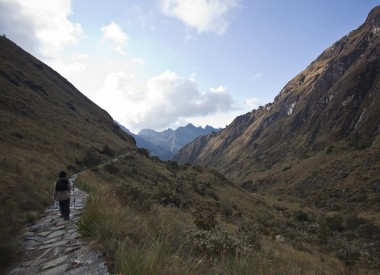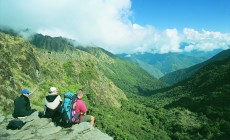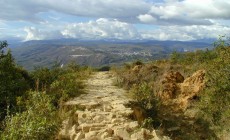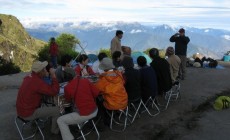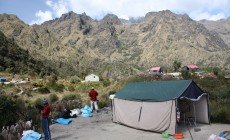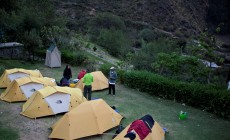-
Latin America
Latin America
- Countries (hidden space)
- Galapagos & Ecuador
- Guatemala
- Mexico
- Panama
- Peru
- Popular Attractions
- Machu Picchu
- Inca Trail
- Easter Island
- Galapagos Islands
- Patagonia
- Rio de Janeiro
- Iguazu Falls
-
Africa
Africa
- Spacer Africa
- South Africa
- Zimbabwe
- Popular Attractions
- Cape Town
- Okavango Delta
- Sossusvlei Dunes
- Victoria Falls
- The Kruger
- The Garden Route
- Masai Mara
-
Asia & Middle East
Asia & Middle East
- Asia
- Borneo (Malaysia)
- Cambodia
- India
- Japan
- Middle East
- Jordan
- Spacer Asia
- Laos
- Sri Lanka
- Uzbekistan
- Vietnam
- Popular Attractions
- Taj Mahal
- Lion Rock (Sigiriya)
- Angkor Wat
- Ha Long Bay
- Kyoto
- Petra
-
Destinations
- Latin America
- Argentina
- Bolivia
- Brazil
- Chile
- Colombia
- Costa Rica
- Galapagos & Ecuador
- Guatemala
- Mexico
- Panama
- Peru
- Asia
- Borneo (Malaysia)
- Cambodia
- India
- Japan
- Laos
- Sri Lanka
- Uzbekistan
- Vietnam
- Middle East
- Jordan
- Southern & East Africa
- Botswana
- Kenya
- Namibia
- South Africa
- Zimbabwe
- Contact Us
-
About
About
Llama Travel provides high quality holidays at the lowest possible prices.
99% recommend us Lower prices - guaranteed Financially protected by ATOL
The Inca Trail is a four-day trek crossing high mountain passes. Although the distance is not great (approximately 45 kilometres over four days), the high altitude (the highest point is 4,200 metres above sea level) and the steep ascents and descents mean that the Inca Trail is a challenging hike. Therefore, you should have a good level of fitness to walk the trail. You will usually walk at your own pace, with the group reforming at points of interest.
Day 1
Maximum altitude
3,000m
Distance walked
12km
Approximate walking time
5-6 hours
You depart Cusco early and are transferred by bus to the start of the Inca Trail at km 82 of the railway line. Starting at Piskacucho, you follow the Urubamba River for about 2km to Patallaqta, an important agricultural site producing food for the Machu Picchu area. From here the trail gently climbs to Huayllabamba, a small village at 3,000m, where you camp for the night.
Day 2
Maximum altitude
4,200m
Distance walked
11km
Approximate walking time
6-8 hours
This is the toughest day on the trail, and the climb up to the first pass is strenuous. It is three to four hours of climbing, which can be tiring, especially due to the altitude and the strong sun. The first pass at 4,200m, Warmiwañusqa (dead woman’s pass), is the highest point of the trail and offers wonderful views. From here you descend into the valley of the Pacamayo River, where the camp for the second night is set up.
Day 3
Maximum altitude
3,950m
Distance walked
16km
Approximate walking time
8 hours
The trail starts climbing up to the second pass. Halfway to the top are the ruins of Runkurakay, a large circular building which was probably a post-house. The second pass at 3,950m offers stunning views of the Vilcabamba range and its snowcapped mountains. The trail descends into cloud forest and to the impressive ruin of Sayacmarca, then follows the side of the mountain, passing through an Inca tunnel, before coming to the third pass, at 3,800m. After entering the ruins of Phuyupatamarca with its fine ritual baths, the trail rapidly descends Inca steps to Wiñay Wayna and the final campsite.
The ruins of Wiñay Wayna, discovered in 1941, are some of the most beautiful in the Inca Empire. The site was mainly agricultural, and the curved terraces on the incredibly steep slope are breathtaking. The name Wiñay Wayna comes from a variety of orchid, meaning forever young in Quechua, as the orchid blooms all year round.
The Peruvian Institute of Culture has advised that they will only be confirming which campsites will be used very close to the start date of the trail itself and is not permitting operators to request specific campsites, so these will not be known in advance. On some occasions, the campsite you sleep at on this day may be Phuyupatamarca. If this campsite is used, you will walk for approximately two hours less on this day and two hours more on the final day, when walking to Machu Picchu. In this case, you will arrive at Machu Picchu at lunch time instead of the early morning. You will spend the same amount of time around the ruins as normal and take a later train back to Cusco in the evening.
Day 4
Maximum altitude
2,700m
Distance walked
6km
Approximate walking time
2 hours
You set off before dawn for the walk of around 1.5 hours to the Intipunku (sun gate). The checkpoint at Wiñay Wayna opens at 5.30am, so you usually arrive at the sun gate at approximately 7 - 7.30am, where you get your first, spectacular view of Machu Picchu in the early morning light. The trail down to the ruins themselves takes about half an hour and a guided visit of Machu Picchu is included before you catch an afternoon train back to Cusco, arriving in the late evening.

